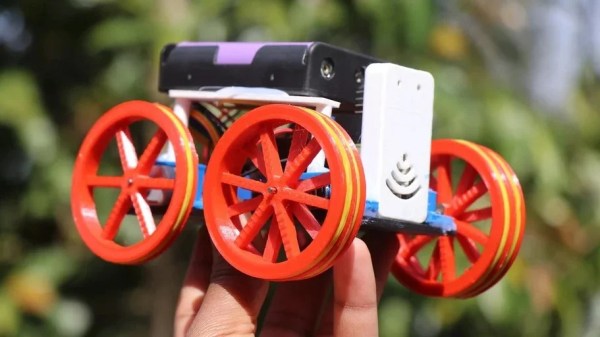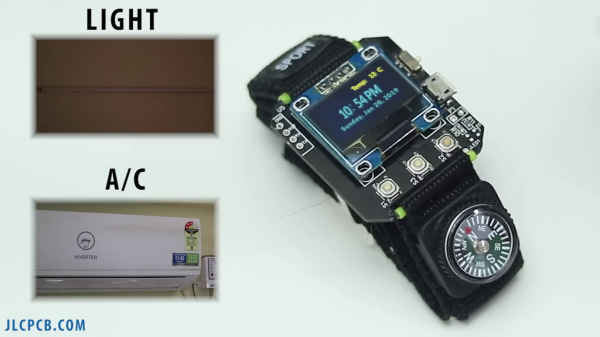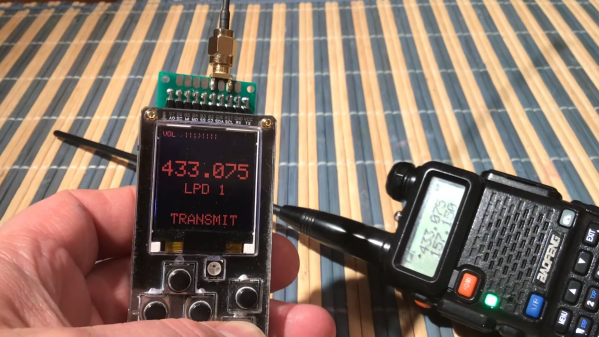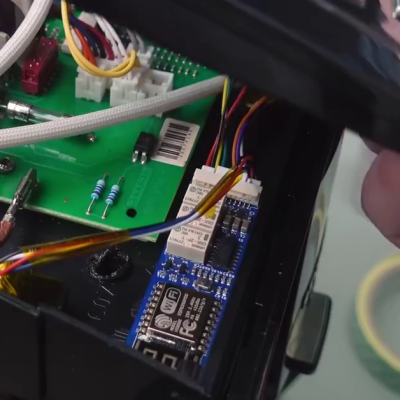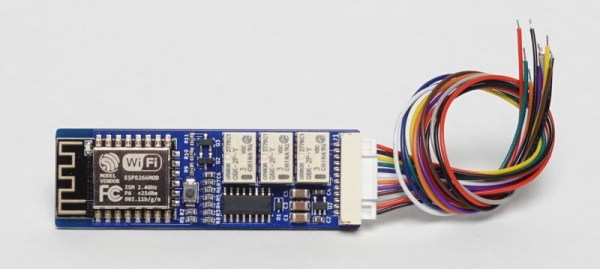Today, wireless-enabled microcontrollers are everywhere and can be had for just a few bucks. You can use them to build all kinds of connected projects more cheaply than ever before. [ROBO HUB] demonstrates this well with an incredibly simple WiFi-controlled RC car build.
The build is based around an NodeMCU ESP8266 microcontroller, paired with an L293D motor driver. This lets the microcontroller drive brushed DC motors for differential drive. Power is courtesy of three 18650 lithium-ion batteries. These parts are assembled into a 3D-printed car of sorts with four wheels. The drivetrain is rather odd, with gear motors installed on the two front wheels, and simple brushed DC motors installed on the two rear wheels. The motors on each side are paired together so the vehicle has tank-style steering.
Meanwhile, the ESP8266 is programmed so it can be controlled via a smartphone app. The touchscreen controls are not as elegant as toy RC cars of years past, but it’s pretty good for a cheap DIY build.
It’s a fairly simple project and one that any high-school student could follow along to learn something. Projects like these can be a great way to learn about everything from mechanics to electronics and even basic programming. It may not be complicated, but that makes it a great learning tool. We see a ton of projects like this on the regular, and every time they’re built, somebody is picking up some new skills.
We’ve been talking about WiFi-controlled RC cars for a long time. Way back when it was nowhere near this easy. Video after the break. Continue reading “It’s Never Been Easier To Build A WiFi-Controlled RC Car”

